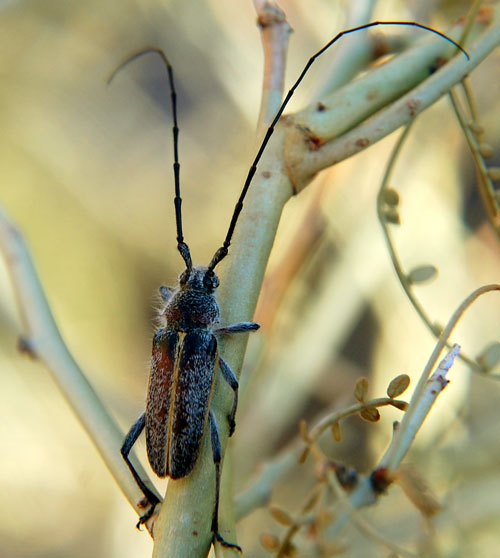Longhorn Beetle
Schizax senex

This male Schizax senex beetle is standing guard on a recently fallen branch of Blue Palo Verde (Parkinsonia florida). If a female arrive to lay eggs in the branch he will attempt to mate with her - but there were four other males on different portions of the same branch so there will be a competition. It was observed in the Muggins Mountains northeast of Yuma, Arizona, USA on 31 January 2010. Identification was made by v. belov and verified by Michael Thomas.
Cerambycidae -- Long-horned Beetle Family
Both male and female Longhorn Beetles have long, stout antennae, but the male's are particularily long, often more than twice the body length. These long antennae serve two purposes. First they are loaded with chemosensors that help them locate food and mates. Minute traces of compounds emmitted by a fermenting tree branch may travel for many kilometers on the wind - a flying beetle will intercept the trail and follow it. Male longhorn beetles of some species use their antennae for grappling with other male rivals in competition for a mating opportunities.
The immature stage of this insect is a milky-white grub that can tunnel through quite sound wood of a tree. This species apparently uses dead or dying limbs of mesquites, palo verdes, net-leaf hackberry (Knull, 1944), desert willow (Swift, 2008) and possibly others. The grub can take a year or more to mature inside a branch, leaving round tunnels as it feeds within.